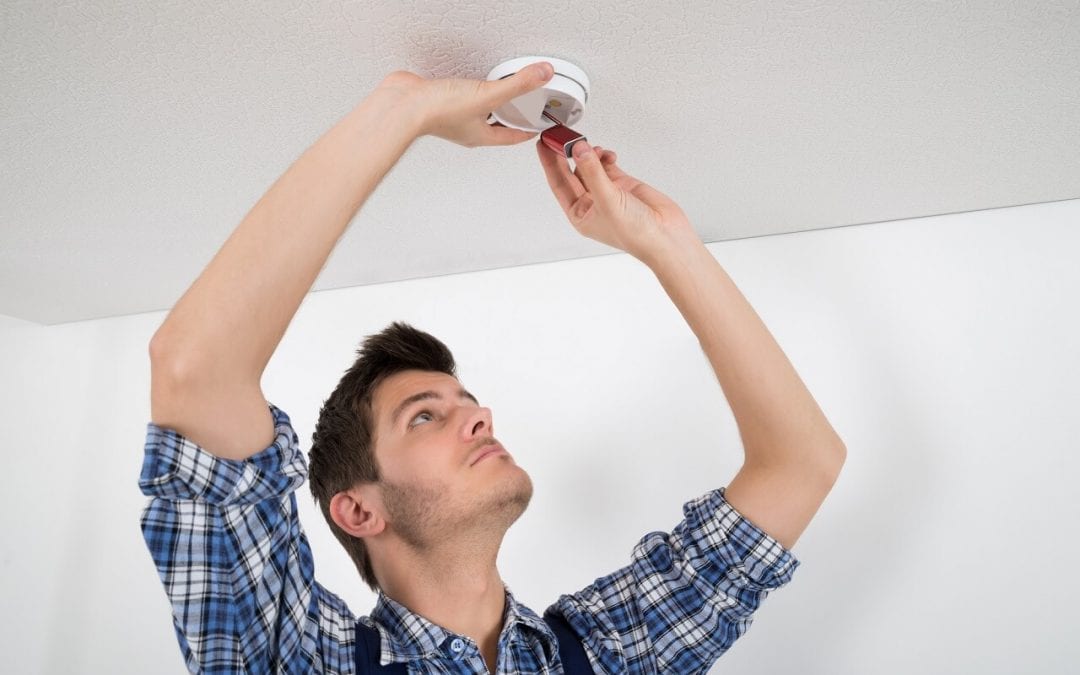It is reported by the NFPA that a home fire occurs every 88 seconds in the United States. On average, seven Americans are injured or lose their lives in fires each day, so prevention is important. One of the easiest and most affordable ways to improve fire safety is with smoke detectors. Installing smoke alarms is only effective when you understand proper smoke detector placement in your home.
The First Rule of Smoke Detector Placement: Put One on Every Floor
At a minimum, there should be one smoke detector installed on each floor of your home, including the basement and attic. While smoke detector placement near the kitchen is recommended, make sure your device is about 10 feet away from the stove to avoid false alarms. Because smoke rises, mount your smoke alarms high on walls or ceilings.
Place Smoke Alarms Close to Stairways
Smoke travels upwards, especially if a fire starts on the lower floor of a multi-level home. If your home has more than one level, place smoke detectors near the stairs on each floor. This increases your odds of receiving ample warning in case of a lower level fire. If you have a two-story home, place a smoke detector at the top of the stairs on the second floor and another one near the stairs on the first floor.
Smoke Detector Placement Includes Sleeping Areas
Be prepared if there’s a fire when everybody is sleeping by installing smoke detectors in bedrooms and in the hallways just outside of them. Don’t forget about guest bedrooms or other rooms that may serve as sleeping areas, like the basement or attic bedrooms. In the attic, install the detector within 3 feet of the peak on pitched ceilings.
Install Detectors Near Fire Risks in Your Home
Smoke detector placement should be based on where you have potential fire hazards in your home. According to the American Red Cross, kitchen fires are most common, so a detector near your kitchen is a must. You should also place a smoke detector in your laundry room since accumulated lint in dryers can cause fires. Other common fire hazard spots include fireplaces and areas where a furnace or boiler is located.
Proper Placement Means Keeping Smoke Detectors Out of Certain Areas
Understanding smoke detector placement also includes knowing where they shouldn’t be located. Alarms installed near doors, windows, or ceiling HVAC vents are affected by drafts. Drafts from ducts and vents interrupt the flow of smoke and prevent an alarm from going off in time to be helpful.
After smoke detector placement is crossed off your to-do list, be sure to read your instruction manual. Smoke detectors won’t be effective if you don’t know how to properly set up and maintain your model. Set a reminder on your calendar to test all units once a month, both battery-powered and hard-wired units.
Carolina’s Best Home Inspections provides home inspections in and around Moore County, North Carolina. Contact us to schedule an appointment.

